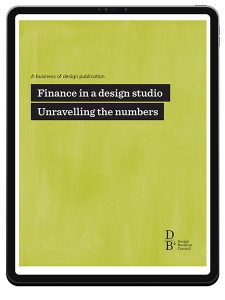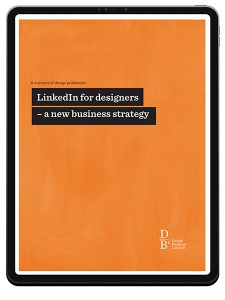We write to fill a gap.
We write short, and long…
Short, sharp ebooks
These ebooks are deep dives into a specific subject of design management. Part reference book, part how-to guide, they’re short, sharp reads.
The aim is to share relevant, accessible information to help designers build confidence in management skills. And we aim to keep the information brief and applicable – the result is a set of ebooks stacked with practical advice you can implement immediately.
What’s a ‘fair’ wage?

The ebook fills an information gap about how much designers should be paid, for what expertise, and with how much flexibility.
Pay rates in the creative industry have always been arbitrary. Our industry has never been unionised or under a relevant State award so salary packages are often based on hear-say and market-demand. That makes deciding what makes for a ‘good’ wage difficult for the employee and the employer.
Added to that, COVID taught us that rewarding good staff is not just about the money – there are other ways to be rewarded for a job done well.
That’s why we’ve written a guidebook to rewarding creatives. We’ve researched and gathered facts from a variety of resources to write an ebook that is as valuable for freelancers and employees as it is for studio/agency owners.
It includes:
- benchmark wages – we quote definitive figures. Our research combines our knowledge (from mentoring and coaching) with research from
• Artisan;
• Become;
• The Brownbill Effect;
• Creative Natives;
• Creative Recruiters and
• The Creative Store.
We document definitive wage ranges for 28 different positions in the creative industry. - why employees should get promoted – we describe the skills needed to move from the bottom to the top of a salary range.
- benchmark freelance rates for 28 positions range of positions in the creative industry.
- and because it’s not all about money, we describe five alternative ways to reward employees and why they’re successful.
We also talk about the importance of clear, robust job descriptions because they are the glue that holds these figures together.
It’s 40 pages of relevant, current information available at $30 + GST
Finance in a design studio

It’s a sad fact designers generally don’t fail because they can’t deliver good design. They fail because they don’t manage their finances to remain viable. The fact is, managing finance and accounting is not usually part of a design curriculum.
Added to that, in a many sectors, business owners hire and work alongside financial experts. That doesn’t usually happen in many creative businesses because the majority have less than five employees, many with less than three. It means our financial expert is most likely a subcontractor, someone outside our business. That makes it imperative creative business owners need to know how to brief, and debrief with confidence and clarity. So, it’s no longer an option, creatives need to understand finance.
Finance in a design studio is a practical guide to managing the finances of a creative business. It includes all the factors creatives need to run a profitable, sustainable business.
Information like:
- how to understand a profit and loss statement
- how to calculate hourly rates
- understanding different cost structures
- understanding different revenue streams
- discussion about the four most common problems in a studio: cash flow, debtors, profitability and capital finance.
- how to develop short and long-term financial measures.
This is the type of information that will make you more confident when you talk to your accountant.
At $30 plus GST this 48 page ebook is an essential reference tool for any designer.
“I really struggled to comprehend the finances in my studio before I found this book. I didn’t do much maths at school and my family aren’t in business, so I was just lost trying to read profit and loss statements, let alone understand the language. It sounds overly dramatic, but this book saved my life. It’s now my bible. It sits permanently on my desk. It’s must go-to reference guide, especially useful when I speak to my accountant.”
Suzanne, Design studio owner, Sydney, New South Wales
Risk management for creatives

What are the risks of running a design studio?
If the pandemic taught the creative industry anything, it taught us the better we understand our business, the easier to identify, understand and assess risks.
But what are the risks we face?
The 2020 Risk Management Survey by the Governance Institute of Australia found 60% of respondents thought potential damage to brand and reputation is their most immediate and serious risk. While that’s a great stat to weave into a client conversation it’s important not to overlook other potential risks.
We’ve researched and identified five potential areas of risk to a creative business: risk to your reputation; risk of unplanned growth; risk to you or your employee’s health; risk of financial insolvency; risk to your intellectual property and risk due to failure to innovate.
This publication dives deep into each of these areas and discusses how to assess and address each one.
“Understanding our businesses intimately is the key for every creative professional. Understanding the risks, both known and those on the horizon are what will help us unlock the greatests opportunities in our businesses. I read through DBC’s “How bad can it get?” ebook and was nodding after each page. Yes it can get bad, and sometimes the ‘bad’ is hiding in plain sight and we subconsciously choose not to see it. This DBC book gives some really great insights into the areas where risk exists, and does a great job in lifting the rug under which we sweep all those things we choose to leave for another day. Read it, weep and then get on with building a great creative business.”
Jim Antonopoulos, Managing Director, Tank
68 pages of risk management available for download at $30 + GST
LinkedIn for designers

This ebook is about using LinkedIn to target the type of work you like with the clients you want.
Research consistently finds a vast majority of clients choose LinkedIn as the most important social media platform but surprisingly, few designers use LinkedIn.
Designers hate cold calling — picking up the phone to call a client fills many with dread. And most clients don’t like it either. Clients want to build a relationships. They want creatives who understand their business and have empathy with business challenges.
It’s tough to build a relationship online but we know LinkedIn works. We know because over the past 10 or so years, we’ve mentored and coached many Australian designers and the one challenge common to all is the struggle to find new clients. We’ve used the approach outlined in this ebook and without fail, it’s always worked to help identify prospective clients and find the right information to tailor a bespoke approach.
It’s written specifically for Australian designers covering topics like:
- why new business is important and why use LI works
- what constitutes a good profile
- how to use LI if you don’t like writing…
- a sample LI new business strategy
- case studies of real Australian designers and how they use LI
“People laugh at me when I say that LinkedIn is my favourite social media tool, but Design Business Council’s LinkedIn for Designers identifies why. Not just about networking, this savvy and valuable guide for designers (or anyone!) shows how to optimise LinkedIn to match your new business strategy. Full of thoughtful tips, easy steps to follow and clear examples to boot, this guide is perfect for anyone looking to strategically secure new work.”
Libby de Souza, Senior Producer, Portable.
Publication – a bible of the Australian design industry
This is a long form, hardcopy publication written about the Australian design industry. It contains all the information needed to start, manage and grow a design studio.
We wrote this book to fill a gap. There’s books about theory. There’s books about the US and UK market. This book is stacked with a practical knowledge about the Australian design industry.
How to start, manage and grow an Australian design business
The Business of Design is the essential reference for all Australian design businesses. It contains all the information needed to start, manage and grow a design studio.
It’s a practical tool written from a completely local perspective. It’s about the Australian design industry, written for Australian creatives, by two Australian design practitioners. The content is relevant to micro-, mid- or a large studios. They all face similar challenges.
Here’s a snapshot of what you’ll find:
- the Australian design scene – a snapshot of our industry
- how to plan a design business – what to do now, and the next steps to take
- costing, budgeting and (best of all) how to explain design value to clients
- how to grow a studio, where to get new business
- financial management, from managing debts to financing your business
- the design business model canvas and what makes it invaluable.
At $50 plus GST this 192 page book is an essential reference for your business.
“A couple of years back when I was trying to wrangle my business into shape & understand how to become more viable and efficient, I was seeking information wherever I could & finding gaps and roadblocks. When others were holding their cards close to their chest, this book was like one of those super smart uncles/aunties/people in your life who take the time to be direct, generous, and leave you feeling way smarter. I can’t quite believe that the imprint says it was published 10 years ago. The structure, advice and practical steps are rock solid. Also, when I purchased it, Greg sent me updated design industry statistics so I was brought up to speed.
My sources of info prior to this were mostly Youtube and blogs by people not based here in Aus. Those sources were helpful in a theoretical way, but not enough to help you see the status of the playing field. There are gems in here for everyone, not just designers, but also for anyone looking to learn about planning, positioning and managing a creative business. I still revisit it frequently, and will continue to do so.”
Lisa Burn, Intent Creative

